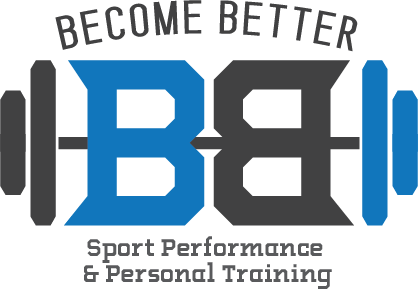How to Eat Healthier When Eating Out
This article will be the fourth in our healthier eating series. Before reading on, make sure you’ve checked out the previous three! Click the links below to read these articles.
Should Foods Be Classified as Healthy or Unhealthy?
Healthier Lunch/Dinner Options
This week we will discuss some general considerations for eating healthy when you go out for lunch or dinner.
Appetizers
An unhealthy appetizer can easily defeat the purpose of trying to eat a healthy dinner. In fact, if you’re trying to lose weight it might be best to just try and avoid appetizers if possible if you are already having a full dinner since an appetizer would just add extra calories even if it’s “healthy”. However, if you are out with friends or family and they insist on getting an appetizer, some options are definitely healthier than others. Healthy appetizers would be ones that are either lean protein based or vegetable based, and not fried or covered in cheese or oil (unfortunately, chicken wings and jalapeño poppers don’t fit the criteria). Some examples of healthy appetizers include teriyaki chicken/shrimp skewers, stuffed bell peppers, lettuce wraps, and veggie & dip platters. If your company decides they want a less healthy option, just make sure you don’t overindulge! Limit yourself to a few pieces/bites.
You’ll also likely want to limit yourself at Mexican or Italian restaurants where you get complimentary chips & salsa or bread & olive oil. Eating too much of these things is a good way to overshoot your calorie and macro goals for the day.
Salads
Salads are the first thing that comes to mind when some people think about eating healthy. Salads can definitely be very nutrient dense and low calorie but they can also be very high in calories, sometimes even more so than burgers and pasta dishes. Just because it’s a salad doesn’t mean that it’s healthy! Make sure you know what you’re eating. Healthy salads will consist of lettuce and other vegetables, and maybe a serving of protein such as grilled chicken, steak, or shrimp. An easy way to turn a healthy salad into a very unhealthy salad is to smother it in a fatty dressing. While dressings taste great, they are typically very high in fat and add an absurd amount of calories to even the healthiest of salads. Instead of getting the dressing on the salad, ask for it on the side and use it sparingly. Another place where salads can go wrong is when it has other toppings besides vegetables and lean protein. Adding a bunch of cheese, bacon bits, and/or nuts to a salad can cause the calorie content to skyrocket! Try to avoid these things, or ask for half portions of them rather than full portions.
Sandwiches
Similar to salads, sandwiches are often viewed as healthy but they can just as easily be unhealthy. A healthy sandwich will consist of bread, lean protein, and vegetables. Turkey, ham, and roast beef are safe bets. All of these meats are high in protein and low in fat. Some less healthy options include salami, bologna, and pastrami. While these meats are still pretty high in protein, they are also high in fat, which causes the calories to stack up quickly. Some common things that are added to sandwiches that make them less healthy by adding excess calories include cheese, bacon, mayonnaise, and sauces. If you enjoy these things and still want them on your sandwich, ask for light portions or get them on the side!
Entrées
When ordering entrées, try to follow the simple healthy eating formula we discussed last week; one lean protein, one or more veggies, and one carb. Baked, grilled, or sautéed chicken breast, pork chops, and fish tend to be the smarter choices when eating out since steak is usually much fattier (depending on the cut). For your sides, order some vegetables and rice or a potato and you’ll have yourself a healthy meal! Most restaurants even have a “lighter fare” section on their menu where you can find plenty of healthy options. Some things you may want to avoid when trying to eat healthy include pasta dishes, pizzas, burgers, burritos, French fries, onion rings, loaded baked potatoes, fried foods, and foods covered in cheese, butter, or oil. While these foods aren’t inherently bad, they tend to be much higher in calories and lower in nutrients than other options such as the ones we discussed above. Choose your entrées wisely, and remember that portion control is what matters most!
Drinks
Liquid calories add up. This is an often-overlooked aspect of a healthy diet! It is pretty easy to unknowingly drink 500+ calories in a sitting! For this reason, it may be smart to stick with water instead of soda or alcohol. If you insist on drinking, you’ll probably want to limit yourself to one drink in a sitting. You can also cut down the calorie content of your drinks by drinking light beer, skinny wine, or diet soda instead of the alternatives. It doesn’t matter how healthy or low calorie your dinner is if you washed it down with several beers or cocktails!
Conclusion
As with everything in life, it’s important to find a balance. You don’t want to be the annoying person in your friend group who is always looking for ways to cut calories, but you also don’t want to let peer pressure stop you from accomplishing your goals. Make healthy food choices when you can, and just control yourself when you make less healthy food choices. If you are conscious about what you’re eating and you control your portion sizes, eating out with friends or family will not throw you off the rails!

